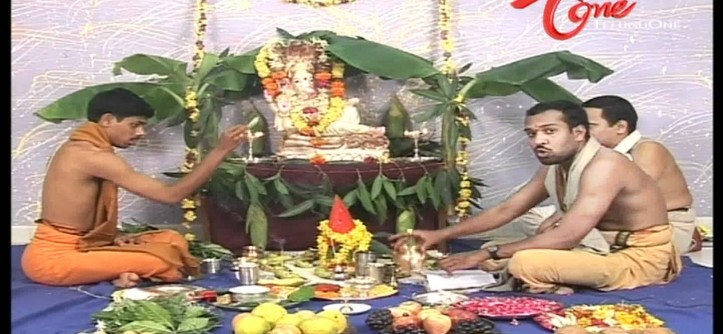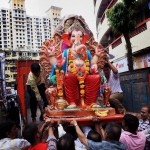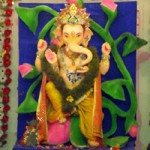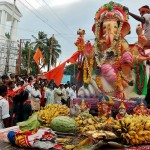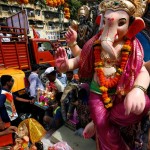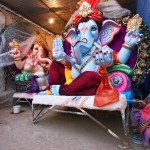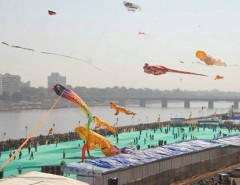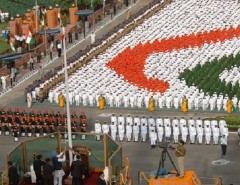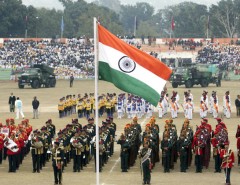Ganesh Chaturthi (also known chavathi Gaṇēśa Chaturthī or Vināyaka Chaviti) is the Hindu festival celebrated in honor of lord Ganesh. This is a very auspicious day celebrated to pray to the god so that every new activity that is started is successfully completed without any obstacles .(Vighna = Obstacle). He is the God of knowledge.
Chaturthi (Sanskrit: चतुर्थी) means “fourth day” or “fourth state”. Celebrations are traditionally held on the fourth day of the second fortnight (Shukla Chaturthi) in every month and is also known as “Vinayaka Chathurti”, but the biggest annual celebration in the month of Bhaadrapada in the Hindu calendar, usually is August or September in the Gregorian calendar. Badrapad corresponds to Virgo (simha/avani-tamil) in solar calendar. The festival generally lasts ten days, ending on the fourteenth day of the fortnight.
The festival is celebrated by families at home, by people at their places of work and in public. The public celebration involves installing clay images of Ganesha in public pandals (temporary shrines) and group worship. At home, an appropriately-sized clay image is installed and worshiped with family and friends. At the end of the festival, the idols are immersed in a large body of water such as the sea, river or a lake. The clay idols disintegrate over time in the water.
It is celebrated throughout India, especially in the states of Maharashtra, Gujarat, Telangana and Andhra Pradesh. There is a grand celebration in the state of Maharashtra and Telangana by traditional instrument called dhol and tasha. It is also celebrated in the other parts of India such as Karnataka, Tamil Nadu, Kerala, Goa, Odisha, Madhya Pradesh, Chhattisgarh and other parts of western and southern India. Abroad, Ganesha Chaturthi is observed in Nepal and by the Hindu diaspora in The United States, Canada and Mauritius. All the big Ganesh statues are made in Andhra Pradesh.
History
Although it is unknown when (or how) Ganesha Chaturthi was first observed, the festival has been publicly celebrated in Pune since the era of Shivaji (1630–1680, founder of the Maratha Empire). The Peshwas (hereditary administrators of the empire from 1718 until its end in 1818) encouraged the celebrations in their capital, Pune, since Ganesha was their family god (Kuladevata). With the fall of the Peshwas, the Ganesha festival lost state patronage and became a private family celebration in Maharashtra until its revival by Indian freedom fighter and social reformer Lokmanya Tilak.
The current Maharashtra public festival was introduced in 1892 by Bhausaheb Laxman Javale ( also known as Bhau Rangari), who installed the first sarvajanik (public) Ganesha idol after he met with Balasaheb Natu and Krishnajipant Khasgiwale at his home. When he visited the Maratha-ruled state of Gwalior, Khasgiwale saw the traditional public celebration and brought it to the attention of his friends in Pune. In 1893, Tilak praised the celebration of sarvajanik Ganesha utsav in his newspaper, Kesari, and the following year he installed a Ganesha idol in the Kesari office; his efforts transformed the annual domestic festival into a large, well-organised public event. Tilak recognized Ganesha’s appeal as “the god for everybody”, popularising Ganesha Chaturthi as a national festival to “bridge the gap between Brahmins and ‘non-Brahmins’ and find a context in which to build a new grassroots unity between them”, generating nationalistic fervour in the Maharashtrian people to oppose British colonial rule. He was the first to install large public images of Ganesha in pavilions, and established the practise of submerging the idols in rivers, the sea or other bodies of water on the tenth day of the festival.
Encouraged by Tilak, Ganesh Chaturthi facilitated community participation and involvement in the forms of intellectual discourse, poetry recitals, plays, concerts, and folk dances. It was a meeting ground for people from all castes and communities at a time when the British discouraged social and political gatherings to control the population.
In Goa, Ganesha Chaturthi predates the Kadamba era. The Goa Inquisition had banned Hindu festivals, and Hindus who did not convert to Christianity were severely restricted. However, Hindu Goans continued to practice their religion despite the restrictions. Many families worship Ganesha in the form of patri (leaves used for worshiping Ganesha or other gods), a picture drawn on paper or small silver idols. In some households Ganesha idols are hidden, a feature unique to Ganesh Chaturthi in Goa due to a ban on clay Ganesha idols and festivals by the Jesuits as part of the Inquisition. Unlike the Maharashtra festival, Ganesh Chaturthi is more of a family affair; gatherings of 1,000 or more celebrate the festival in their ancestral homes.
Foods
The primary sweet dish during the festival is modak (modak in Marathi and Konkani, modakam or kudumu in Telugu, modaka or kadubu in Kannada, kozhakatta or modakkam in Malayalam and kozhukattai or modagam in Tamil). A modak is a dumpling made from rice or wheat flour, stuffed with grated coconut, jaggery, dried fruits and other condiments and steamed or fried. Another popular sweet dish is the karanji (karjikai in Kannada), similar to modak in composition and taste but in a semicircular shape.This sweet meal is called Nevri in Goa and is synonymous with Ganesh festival amongst the Goans and the Konkani diaspora.
In Andhra Pradesh and Telangana modak, laddu, vundrallu (steamed, coarsely-ground rice-flour balls), panakam (a jaggery-, black pepper- and cardamom-flavored drink), vadapappu (soaked moong lentils) and chalividi (a cooked rice flour and jaggery mixture) are offered to Ganesha. These offerings are known as naivedya, and a plate of modak traditionally holds 21 pieces of the sweet. In Goa, modak and a Goan version of idli (sanna) is popular.

